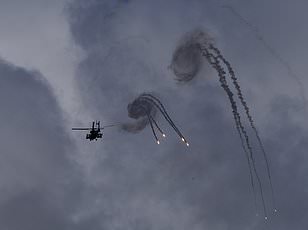- Follow MailOnline's live blog for latest updates on the Israel-Iran conflict
A vindictive Iran last night sought to strike at the heart of Israel with a shocking attack that saw an unprecedented barrage of almost 200 ballistic missiles streak towards Israeli cities.
Israeli Prime Minister Benjamin Netanyahu said Iran 'has made a big mistake' and 'will pay' for the attack, with Israel's military preparing a 'significant retaliation' to the bombardment that could see it strike nuclear facilities and oil fields.
It's unclear how many of the missiles actually penetrated Israel's defences, with the scale of the strike proving to be one of the biggest tests ever faced by the country's hi-tech Iron Dome network.
A triumphant Tehran has claimed up to 80 per cent of its missiles ripped through Israel's sophisticated air defences - but the IDF disputed this, saying most were shot down, with the aid of US warships in the region.
Dramatic footage from the aerial assault showed missiles streaking through the sky, with some exploding mid-air after being hit by Israeli air defence missiles - while others were seen slamming into the ground and blowing up.
And as the fallout of last night's raid continues to clear, amid fears a retaliatory strike could ignite 'all-out war' in the Middle East, defence experts have said Israel's air defences were broadly successful in protecting the country.
'If this is the best [Iran] can do, then Israel will chalk this up as yet another victory. Yes, another humiliation for Tehran,' defence expert Michael Clarke said.

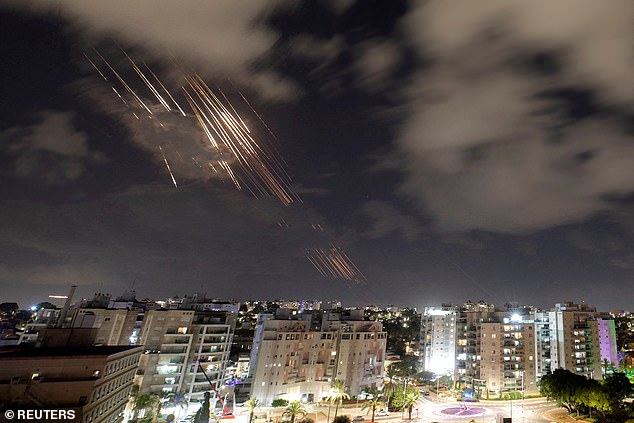
Israel faced a devastating salvo of about 180 ballistic missiles fire from Iran last night (picture are some of the missiles streaking down towards Israel)
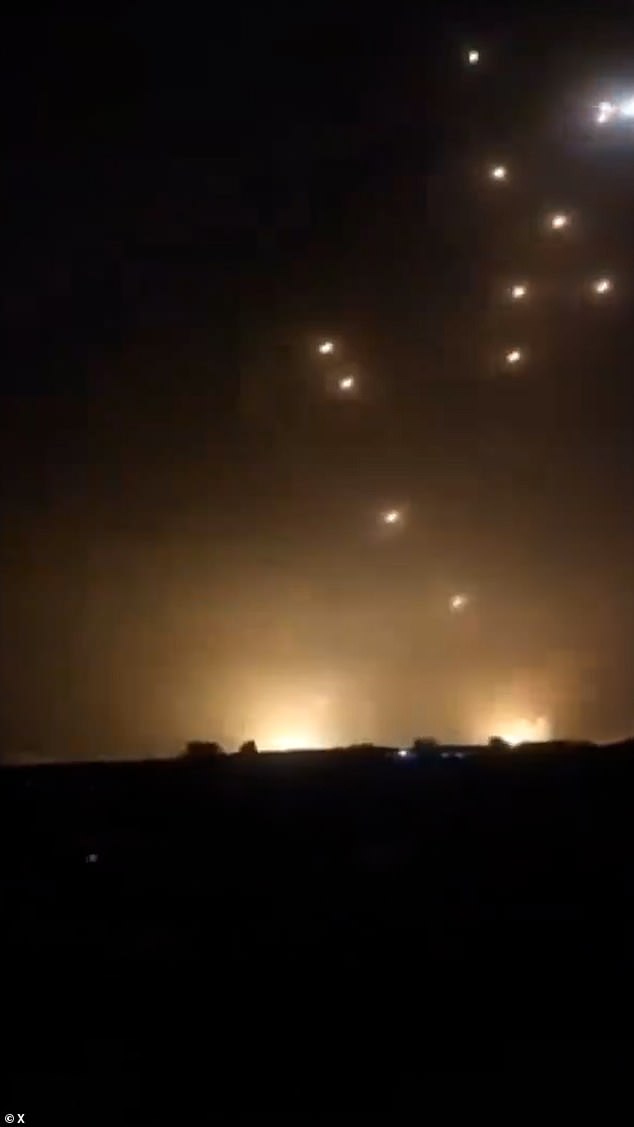
Israel's air defences were pushed to the limit last night, with dramatic video footage showing the moment some Iranian missiles slammed into the ground and exploded

Dramatic footage shows missiles exploding near Tel Aviv - as the Iron Dome stood firm
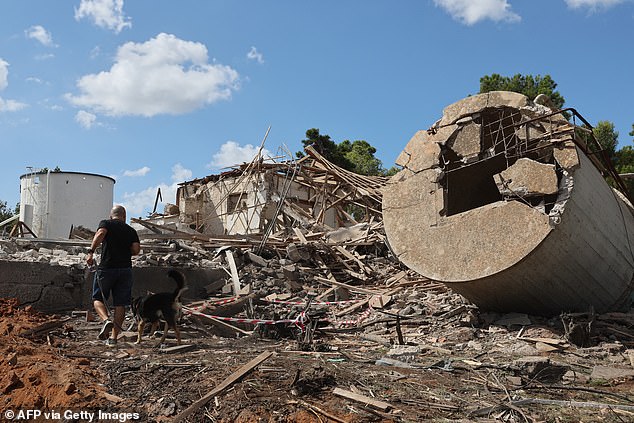
The aftermath of the strike was clear this morning. Pictured is a man walking with a dog past a the rubble of a destroyed building in Hod HaSharon in the aftermath of an Iranian missile
Israeli officials have not reported any serious injuries as a result of Tuesday's air attacks, but Israeli medics said two people had been slightly wounded by shrapnel.
Israel's Iron Dome system garners the most attention of the country's air defences as it's used most frequently to bring down unguided, short-range rockets often fired by Hezbollah and Hamas.
However, the country's air defences are made of three critical 'overlapping' systems that can blast threats out of the skies at different ranges.
The targeting of guided ballistic missiles that travel at higher altitudes, longer ranges and faster speeds requires a different system from the Iron Dome to take them down.
For this, Israel uses both 'David's Sling 'and the 'Arrow 2 and 3' home-grown air defence systems which are built to destroy medium-range and long-range ballistic missiles.
Defence expert Prof Clarke said Iran's shock attack had sought to 'overwhelm' Israeli defences - and was a step up from Tehran's last attack on April 13 when more than 300 projectiles were fired and largely repelled.
He said TV pictures indicated a 'fairly fierce, sort of missile, counter-missile battery battle' above Jerusalem and other cities.
Although some missiles appeared to breach Israeli defences, Prof Clarke claimed this could have been a deliberate decision by the IDF to 'let go' the missiles that weren't deemed a major threat.
Describing the Iron Dome and it's effectiveness, he told Sky News: 'It's really important to understand when we're trying to talk about how effectively the Iron Dome – Israel's defence system works.
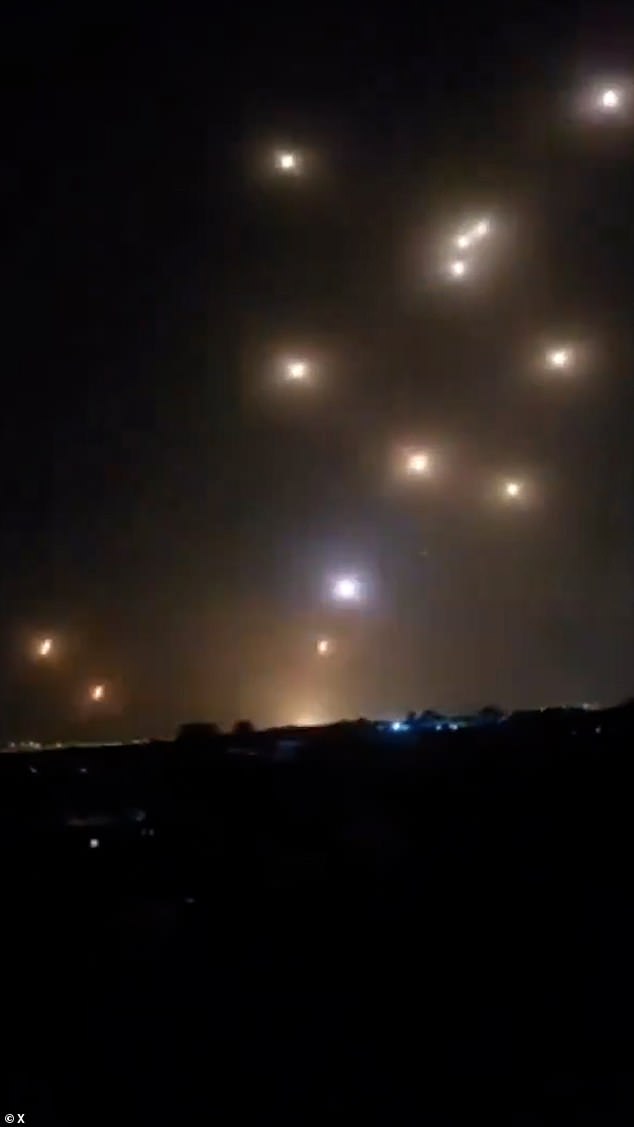
Stunned Israelis filmed the moment Iranian missiles slammed into the ground after breaching the country's air defences
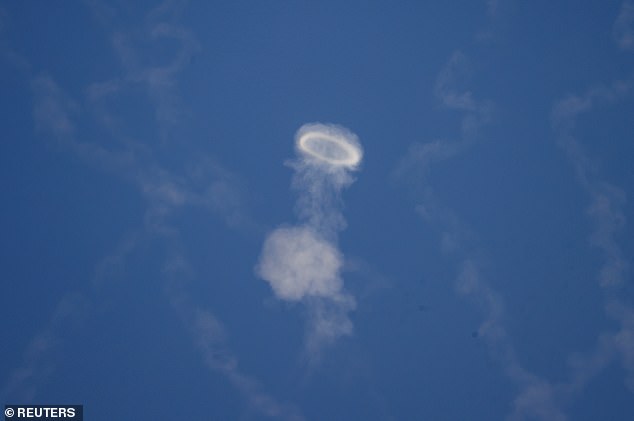
Israel's Iron Dome missile defense system intercepts a rocket attack launched from Lebanon, amid cross-border hostilities between. The Iron Dome is built for intercepting close-range attack, with the 'David's Sling 'and the 'Arrow 2 and 3' systems dealing with ballistic missiles

People take shelter during an air raid siren after Iran fired a salvo of ballistic missiles, amid cross-border hostilities between Hezbollah and Israel, in central Israel October 1, 2024

Members of Israel's Home Front Command and police forces inspect a crater left by an exploded projectile at a heavily-damaged school building in Israel's southern city of Gedera on October 1, 2024
'What they do is they track incoming missiles and if they think that the missile is going to land in a place that doesn't matter they just let it go.
'There's no point in using a very expensive air defence missile against something that is going to fall into the middle of the desert.
'The whole of the Iron Dome system is built on a very sophisticated monitoring system and they work out which missiles they need to intercept and which missiles they just let go.
'And so when the Iranians claims 'lots of missiles have landed' some of them probably will have – but some of them will have probably landed in the middle of nowhere and the Israelis will have just let them go.'
He said ballistic missiles were 'much more predictable than cruise missiles', which weren't used last night.
Cruise missiles have the ability to be guided towards their target and were 'harder to predict' where they would land, Prof Clarke said.
'It may be programmed to dodge around and go on a decoy and turn back around and so on before it reaches it’s target.
‘So you don’t really know [where it will land] and you’ve got no choice but to shoot cruise missiles down if you can.
‘But ballistic missiles – the sort that the Iranians are using which are almost certainly variations of the Fateh-110 which they developed many years ago – only burn for maybe 30 or 40 seconds, and then they’re on pure ballistics.
‘So once the take-off has been detected – and they’re easy to detect on take-off because they’re slow and hot and have a very big signature.'
Israel's Iron Dome air defence system has been dubbed one of the best in the world, and according to its developer Rafael Advanced Defense Systems, is '90 per cent effective'.
The three-part, multi-billion pound Iron Dome system, developed by Israel with US backing after the 2006 Lebanon War, has been crucial in defending Israeli cities for over a decade and is credited with preventing serious damage or casualties.
Similar tactics have also been used by Russia to blast Ukraine's flurry of Western and Soviet-era surface-to-air systems.
The Jewish state has at least 10 missile batteries capable of intercepting enemy rockets and missiles scattered across the country.

Iranian state TV broadcasted the moment it launched nearly 200 missiles towards Israel
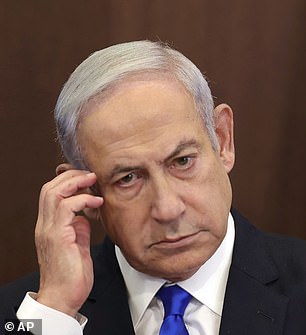
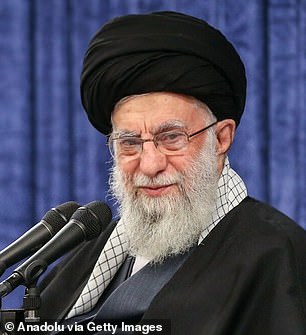

An Israeli flag is pictured hanging in front of a heavily-damaged school in Israel's southern city of Gedera on October 2, 2024

A view of a giant hole as Israeli forces arrive in the area and investigate debris of missiles fired from Iran towards Israel, after they fall in Herzliya, north of Tel Aviv, Israel on October 01, 2024

A member of Israeli rescue force inspects the site where a missile fired from Iran towards Israel hit a school building, in central Israel, October 1, 2024.
The device is made up of three main sections: a radar detection system, a computer to calculate the incoming rocket's trajectory, and a launcher that fires interceptors if the rocket is deemed likely to hit a built-up or strategic area.
Each Iron Dome battery consists of three to four launchers that can each carry up to 20 Tamir interceptor missiles.
Commodore Stephen Prest, a retired Royal Navy Commodore who has worked as part of a carrier battle group, believed Israel targeted missiles that posed a high-threat to Israeli civilians and military HQs.
But he told MailOnline: 'These are not trivial problems.
'Ballistic missiles has an up-and-over trajectory whereas cruise missiles fly like a small fast airplane.
'Ballistic missiles launch up like a space rocket, they will potentially exit the atmosphere and come back down. There will be some guidance once back in the atmosphere on getting back on to target.
'But it’s the speed they come down with that makes them much more difficult to target coming down.'
Cmdr Prest suspected that Israel opted to take out the missiles that posed the biggest threat to civilian populations or military HQs.
He added: 'In general, that’s how air defence deals with something called threat evaluation and weapon allocation. You look at all potential threats coming in and priotise them and allocate the appropriate effector.
'You then consider where you think it likely the target and missiles are going to land. If you’re in a ship and have missiles coming in and going near where near the task force you wouldn't waste your munitions of those. You’d use those on the greatest threat – that's those missiles which are targeting the high-value targets like aircraft carriers.

Commodore Steve Prest (retired) said Iran would have sought to target missiles that posed the most threat to civilians and military HQs
'If you’re defending populated areas or military facility you care far less about the ones that aren’t part of this.'
The region is edging closer to all-out war that is already drawing in allies on both sides - with British jets used to counter Iran's strikes, which were fired in retaliation to attacks on the Islamic Republic's Hezbollah allies in Lebanon in recent days.
Reports suggest Israel, which has vowed to strike 'powerfully' in response to Iran , could go after the country's oil facilities.
However, a former head of Britain's Royal Navy this morning warned any such strike could lead to Iran becoming 'even more dangerous'.
Lord Alan West told MailOnline: 'Iran won’t be beaten by being bombed, she will just be wounded and more dangerous. They will just try and find to get back at them.'
Iran is the third biggest producer of crude oil in the OPEC group of oil-producing countries and is heavily reliant on its oil and gas exports to prop up its ailing economy amid years of sanctions.
Former Israeli Intelligence official and regional analyst Avi Melamed told MailOnline the Iranian strike was likely to 'provoke a significant counterstrike', warning that 'Israel's response this time will likely be broader and less restrained than it was in the wake of Iran's unprecedented direct strike in April.'
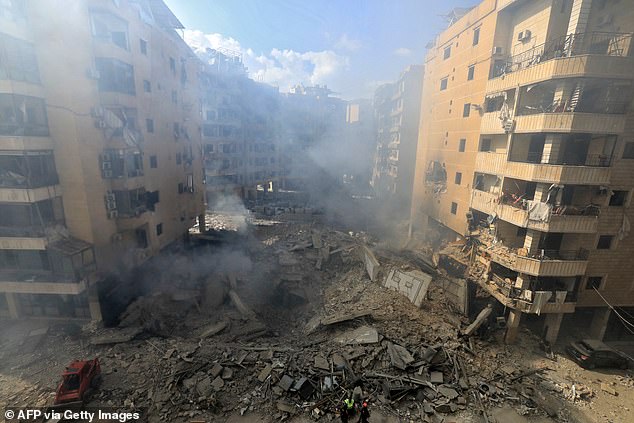
Rescuers check the destruction at the site of an overnight Israeli airstrike in Beirut's southern suburb of Shayyah on October 2
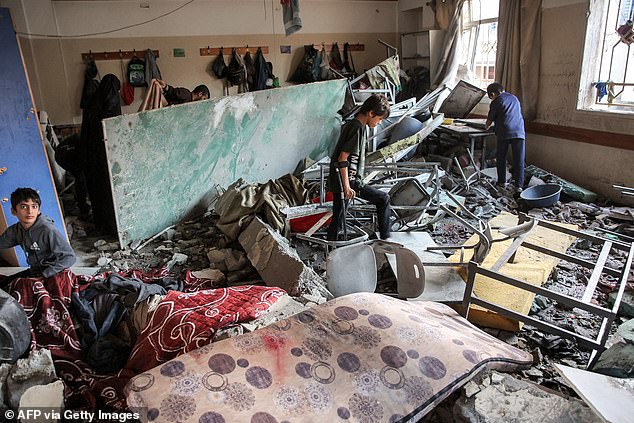
Boys inspect a destroyed classroom in the aftermath of Israeli bombardment on the Palestinian Muscat Governmental School, funded by Omani aid, in Gaza City on October 2
But Iran's armed forces joint chief of staff Gen. Mohammad Bagheri said this morning that the Revolutionary Guard (IRGC) was prepared both defensively and offensively to repeat its missile attack with 'multiplied intensity', should Israel seek retribution.
'If the Zionist regime, that has gone insane, is not contained by America and Europe and intends to continue such crimes or do anything against our sovereignty or territorial integrity, tonight's operation will be repeated with much higher magnitude and we will hit all their infrastructure,' he said.
Iranian Foreign Minister Abbas Araghchi also declared that Tehran had warned the US 'to withdraw from this matter and not to intervene'.
But the US has vowed to stand with its regional ally Israel, with national security adviser Jake Sullivan telling reporters at the White House: 'We have made clear that there will be consequences, severe consequences, for this attack, and we will work with Israel to make that the case.'
Meanwhile, Israel's ongoing military operations have continued uninterrupted - at least five airstrikes reportedly hit the southern suburbs of Beirut early this morning.
More than 1,000 people have been killed in Israeli strikes in Lebanon since September 17, while hundreds of thousands of people have been forced to flee their homes.
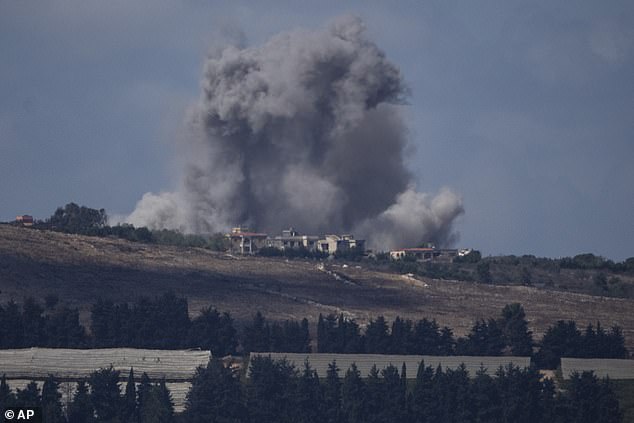
An Israeli airstrike hits an area in southern Lebanon as seen from northern Israel, Wednesday, October 2
And Israeli strikes killed at least 32 people in southern Gaza overnight as the military launched ground operations in the hard-hit city of Khan Younis.
Israel has continued to strike what it says are militant targets across Gaza nearly a year after Hamas' October 7 attack ignited the war, even as attention has shifted to Lebanon and growing tensions with Iran.
Defence secretary John Healey visited Cyprus today as the British government steps up efforts for a potential evacuation of UK nationals in Lebanon as the crisis threatens to boil over.
Mr Healey confirmed British forces were involved in efforts to defend Israel from Iran's ballistic missile barrage as Prime Minister Sir Keir Starmer warned of the risk of a 'miscalculation"' after the escalation of violence in the region.
It is understood RAF jets were involved in the efforts to intercept the Iranian missiles targeted at Iran.
The operation was similar to the role carried out by the UK's forces when Iran launched a drone and cruise missile barrage at Israel in April, when RAF Typhoons were involved in the defensive effort.
In a statement on Tuesday night, Mr Healey confirmed "British forces have this evening played their part in attempts to prevent further escalation in the Middle East".
Hundreds of British troops have been deployed to Cyprus alongside RAF and Royal Navy assets in the region in preparation for a potential evacuation of British nationals from Lebanon following the launch of Israel's ground offensive.
On Wednesday, Mr Healey met Cypriot counterpart Vasilis Palmas for talks about the crisis.
Israel said it intercepted many of the missiles fired by Iran on Tuesday, while Tehran claimed most had hit their targets. There were no immediate reports of casualties.
In a Downing Street statement on the crisis, Sir Keir Starmer said he was "deeply concerned that the region is on the brink and I am deeply concerned about the risk of miscalculation".
He said that Iran, with proxies including Hezbollah in Lebanon, had "menaced the Middle East for far too long".




























